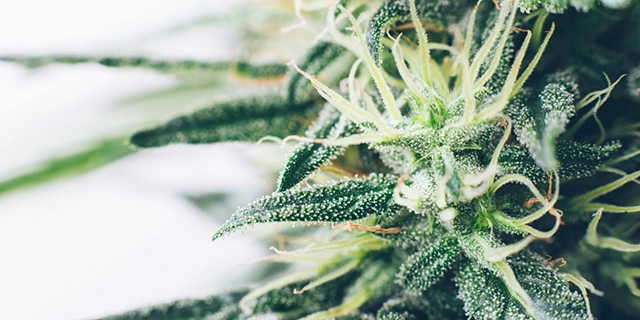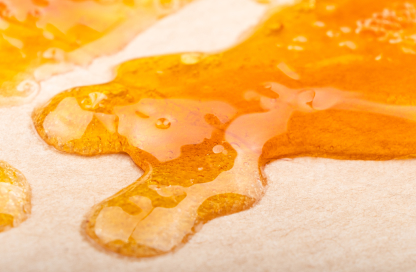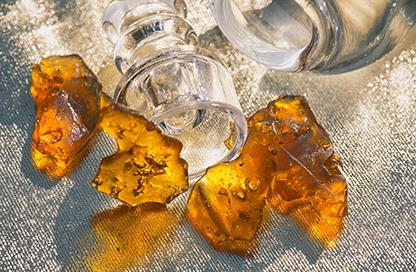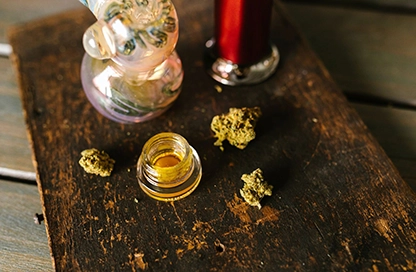What is Weed Hash?
1:15 am - November 30, 2023 - La Mesa, CA - EMBR Editorial
Embark on an enthralling journey into the world of cannabis, where the enigmatic weed hash beckons with its rich heritage and captivating allure. In this article, we aim to demystify “what is weed hash,” tracing its historical roots, unraveling its intricate production techniques, and delving into its multifaceted consumption methods. As we navigate this fascinating world, discover why EMBR Dispensaries is the quintessential destination for your hash explorations.
Skip to a section:
- What is Hash?
- How is Hash Made?
- What’s Different Between Hash and Weed?
- How To Use Hash
- Benefits and Drawbacks of Hashish
What is Hash?
Hash, or hashish, is not merely a cannabis concentrate; it represents a cultural artifact steeped in a history that spans millennia. Originating in regions like Nepal, Morocco, and Afghanistan, hash is derived from the resinous trichomes of the cannabis plant. This potent concentrate is celebrated for its elevated levels of THC and CBD, offering a more intense and nuanced experience than traditional cannabis flowers. Hash varies in color, texture, and potency, ranging from golden brown, soft, and pliable to dark, hard, and brittle, each type reflecting the unique terroir and traditional methods of its origin.

How is Hash Made?
Hash production is an art form that blends ancient traditions and modern advancements. The journey begins with the cannabis plant at the peak of its flowering stage, where trichomes are ripe with cannabinoids and terpenes. Traditional methods, such as hand-rubbing (as seen in the making of Indian Charas) or sieving (standard in Moroccan hash production), are labor-intensive but revered for preserving the plant’s essence. Modern mechanical separation techniques offer more consistency and purity, such as using ice water (for bubble hash) or CO2 extraction. These varying techniques influence the hash’s final characteristics, from its potency and flavor profile to its physical consistency.
What’s Different Between Hash and Weed?
The distinction between hash and weed (dried cannabis flowers) lies in their potency, consumption methods, and sensory experiences. Hash, being a concentrate, has a higher concentration of cannabinoids, mainly THC. This results in more potent and lasting effects, which can be a draw for experienced users but may pose a challenge for beginners. The flavor profile of hash is also more pronounced, offering a richer and more complex experience compared to smoking or vaping dried flowers.

How To Use Hash
Hash’s versatility is one of its most appealing attributes. Smoking remains the most traditional method, with hash often crumbled and mixed with cannabis flowers or tobacco in joints, pipes, or bongs. This mixing aids in combustion and tempers the intensity of the hash. Vaping, a less harsh method, requires vaporizers that can accommodate the unique consistency of hash. For those seeking a smoke-free experience, incorporating hash into edibles presents an appealing alternative. This method, however, requires careful attention to dosage, as the effects of edibles are more pronounced and longer-lasting due to the way THC is metabolized in the body.
Benefits and Drawbacks of Hashish
Hash offers several benefits over traditional cannabis flowers. Its potency ensures a smaller amount is needed to achieve desired effects, making it a cost-effective option for regular users. Hash’s flavor and aroma profiles are also more diverse and intense, appealing to connoisseurs and those seeking a more profound sensory experience. However, the high THC concentration in hash can be overwhelming for newcomers, requiring careful dosing and moderation. Additionally, the inhalation of smoke, whether from cannabis or hash, may not be suitable for all users, particularly those with respiratory concerns.
Find My Dispensary





